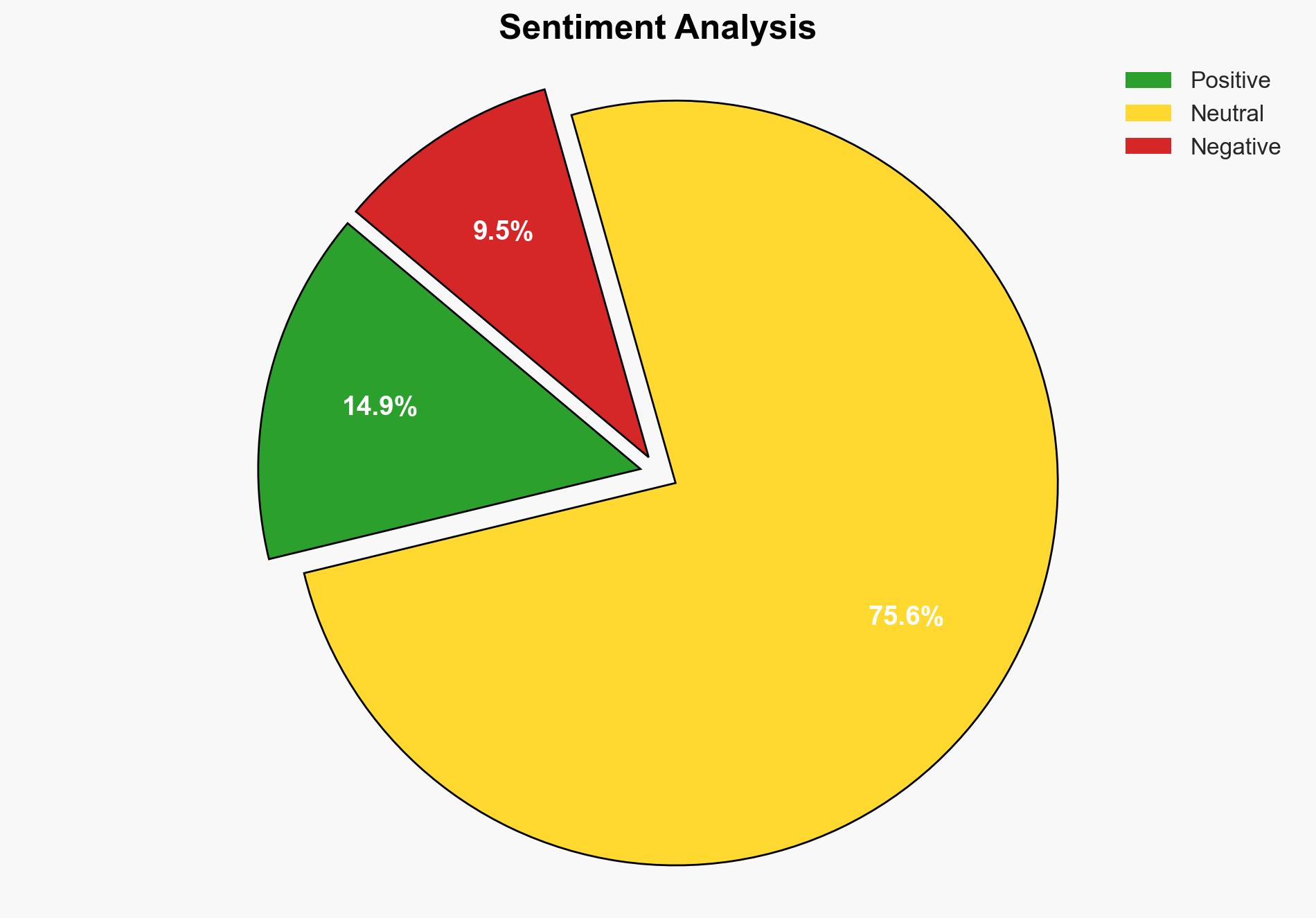Syria merges Kurdish-led Syrian Democratic Forces into state institutions – Al Jazeera English
Published on: 2025-03-10
Intelligence Report: Syria merges Kurdish-led Syrian Democratic Forces into state institutions – Al Jazeera English
1. BLUF (Bottom Line Up Front)
Syria has reached an agreement to integrate the Kurdish-led Syrian Democratic Forces (SDF) into state institutions. This development marks a significant shift in the control of northeastern Syria, previously held by the SDF, and aims to unify civil and military administration under the Syrian central government. The agreement includes provisions for Kurdish rights and citizenship guarantees, although the exact constitutional status of the region remains unclear. This move could alter regional dynamics, impacting both internal and external stakeholders.
2. Detailed Analysis
The following structured analytic techniques have been applied for this analysis:
SWOT Analysis
- Strengths: The integration could stabilize northeastern Syria by unifying administrative control and potentially reducing internal conflict.
- Weaknesses: The ambiguity surrounding the constitutional status of the region and potential resistance from local groups could hinder implementation.
- Opportunities: This agreement may pave the way for improved relations between Syria and Kurdish groups, enhancing regional cooperation.
- Threats: External actors, such as Turkiye, may perceive this integration as a threat, potentially leading to increased tensions or conflict.
Cross-Impact Matrix
The integration of the SDF into Syrian state institutions could influence neighboring regions by altering power dynamics. Increased Syrian government control may deter external interventions, while potentially exacerbating tensions with Turkiye, which opposes Kurdish autonomy.
Scenario Generation
Best-case scenario: Successful integration leads to regional stability, improved governance, and enhanced cooperation with Kurdish groups.
Worst-case scenario: Resistance from local groups and external actors leads to renewed conflict and destabilization.
Most likely scenario: Gradual integration with ongoing negotiations over regional autonomy and Kurdish rights.
3. Implications and Strategic Risks
The integration poses risks to national security and regional stability, particularly if it triggers resistance from local factions or external interventions. Economic interests may be affected by changes in control over resources such as oil and gas fields. The potential for renewed conflict could disrupt regional trade and investment.
4. Recommendations and Outlook
Recommendations:
- Engage in diplomatic efforts to facilitate dialogue between Syrian authorities and Kurdish groups to ensure smooth integration.
- Monitor regional developments to anticipate and mitigate potential conflicts with external actors like Turkiye.
- Support initiatives that promote economic development and infrastructure rebuilding in northeastern Syria to stabilize the region.
Outlook:
The integration process is likely to face challenges due to historical tensions and external pressures. However, with sustained diplomatic efforts and regional cooperation, there is potential for a stable and unified Syria. The situation requires close monitoring to adapt to evolving dynamics and mitigate risks effectively.
5. Key Individuals and Entities
The report mentions significant individuals such as Ahmed Al Sharaa and Mazloum Abdi. Key entities include the Syrian Democratic Forces and the Syrian central government. These actors play crucial roles in the ongoing integration process and regional stability.





